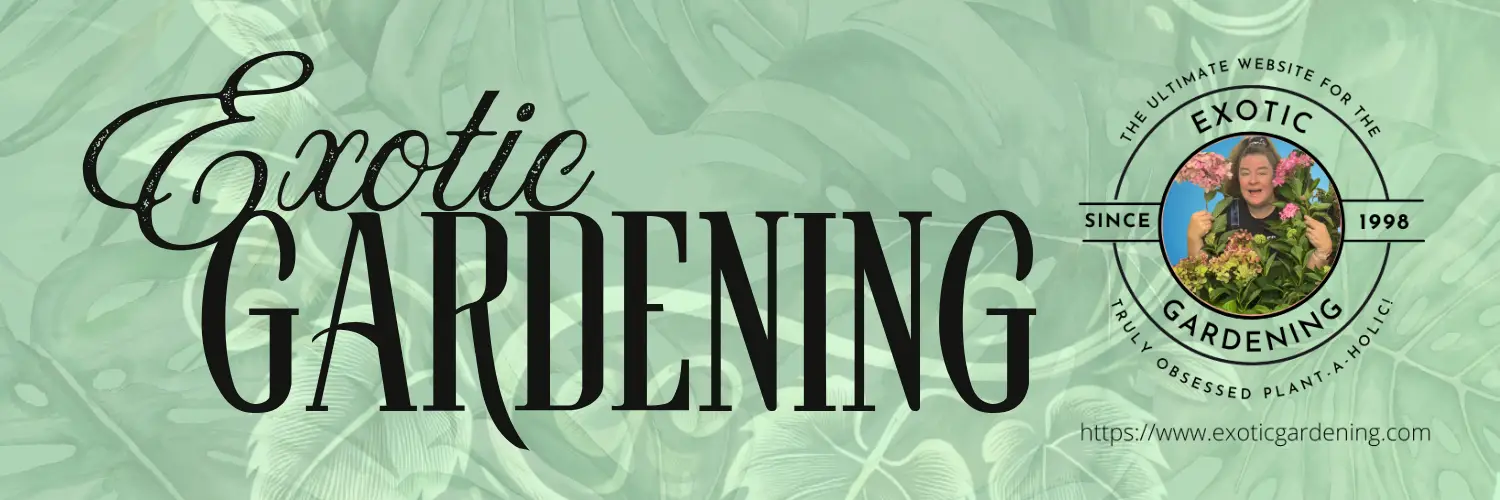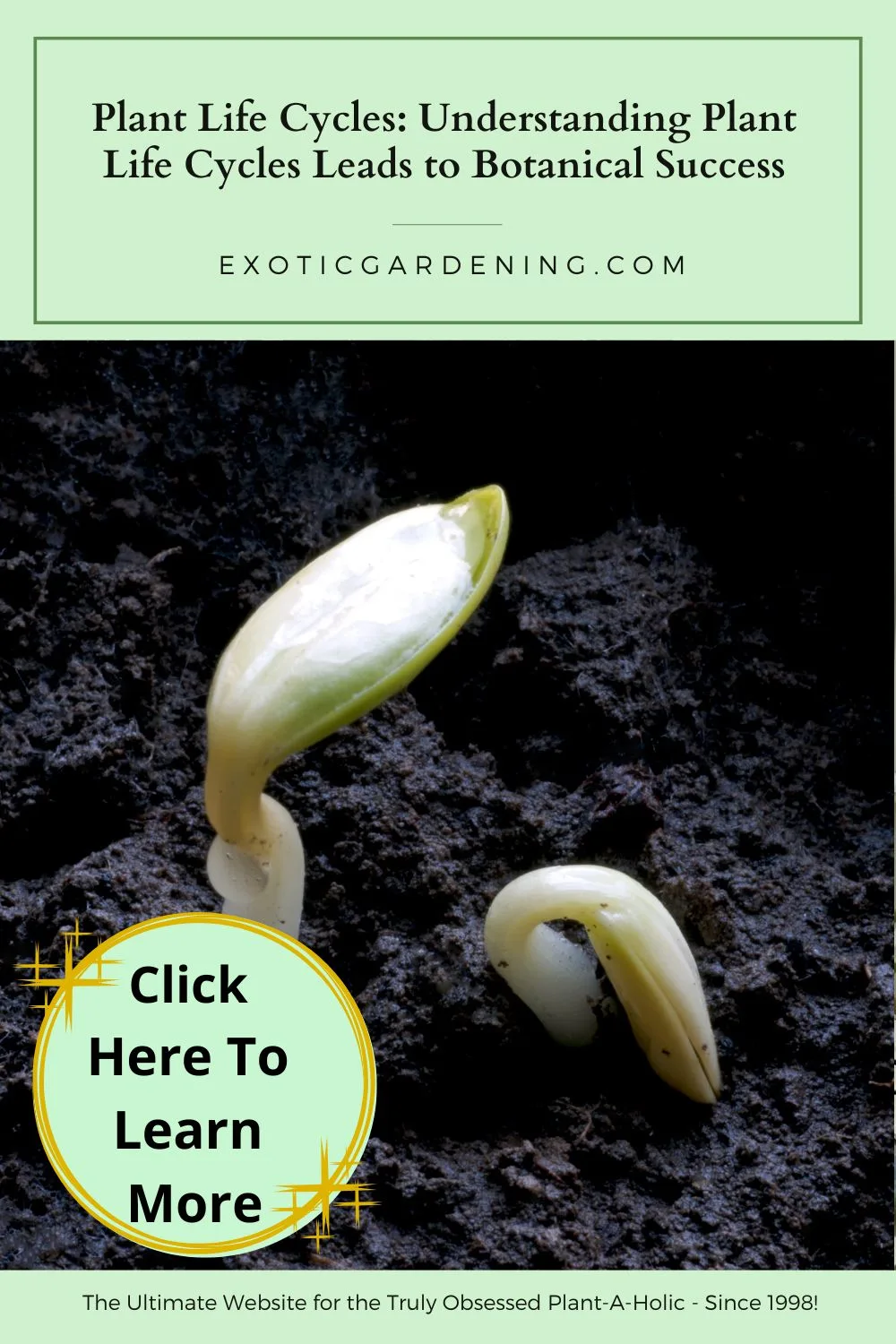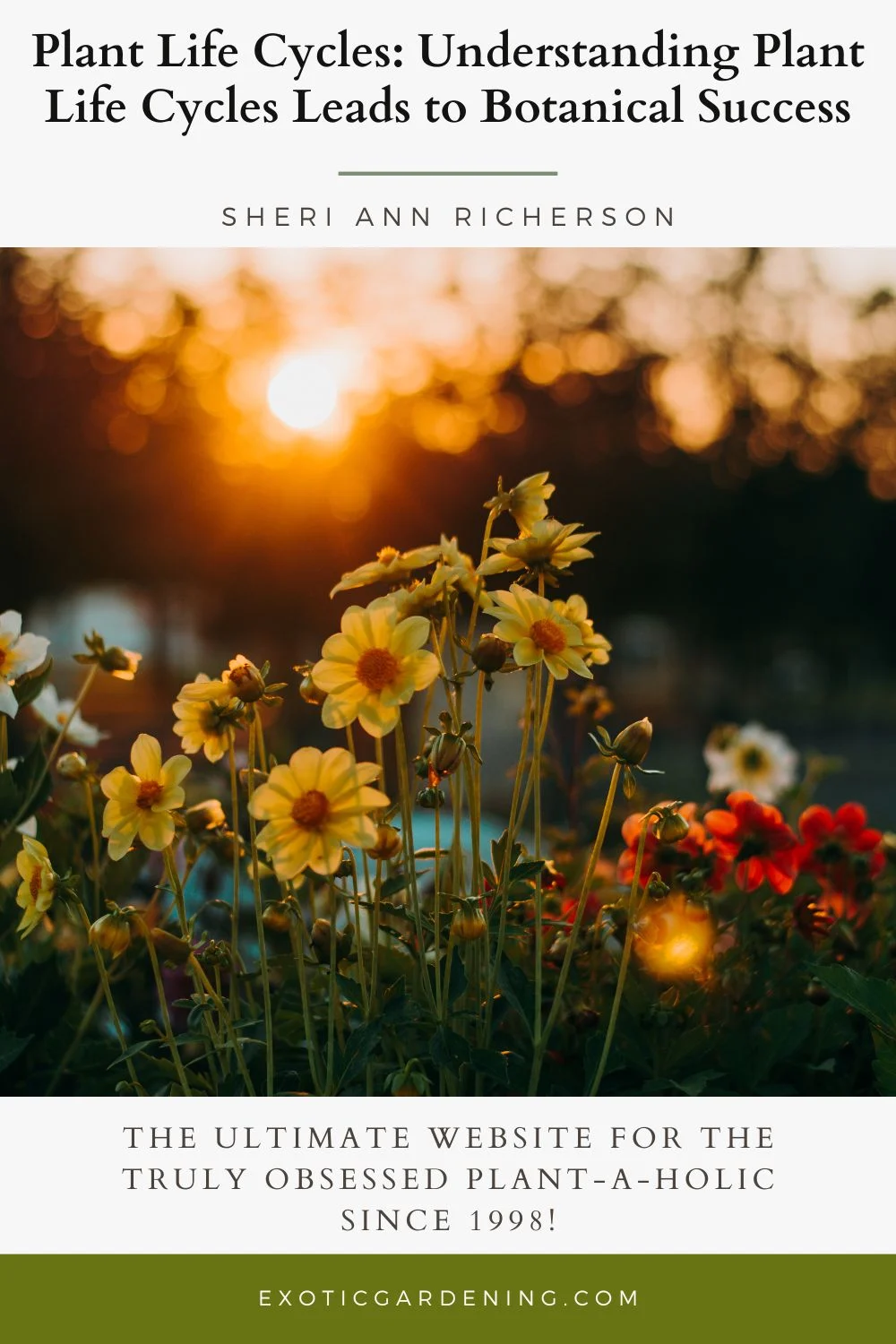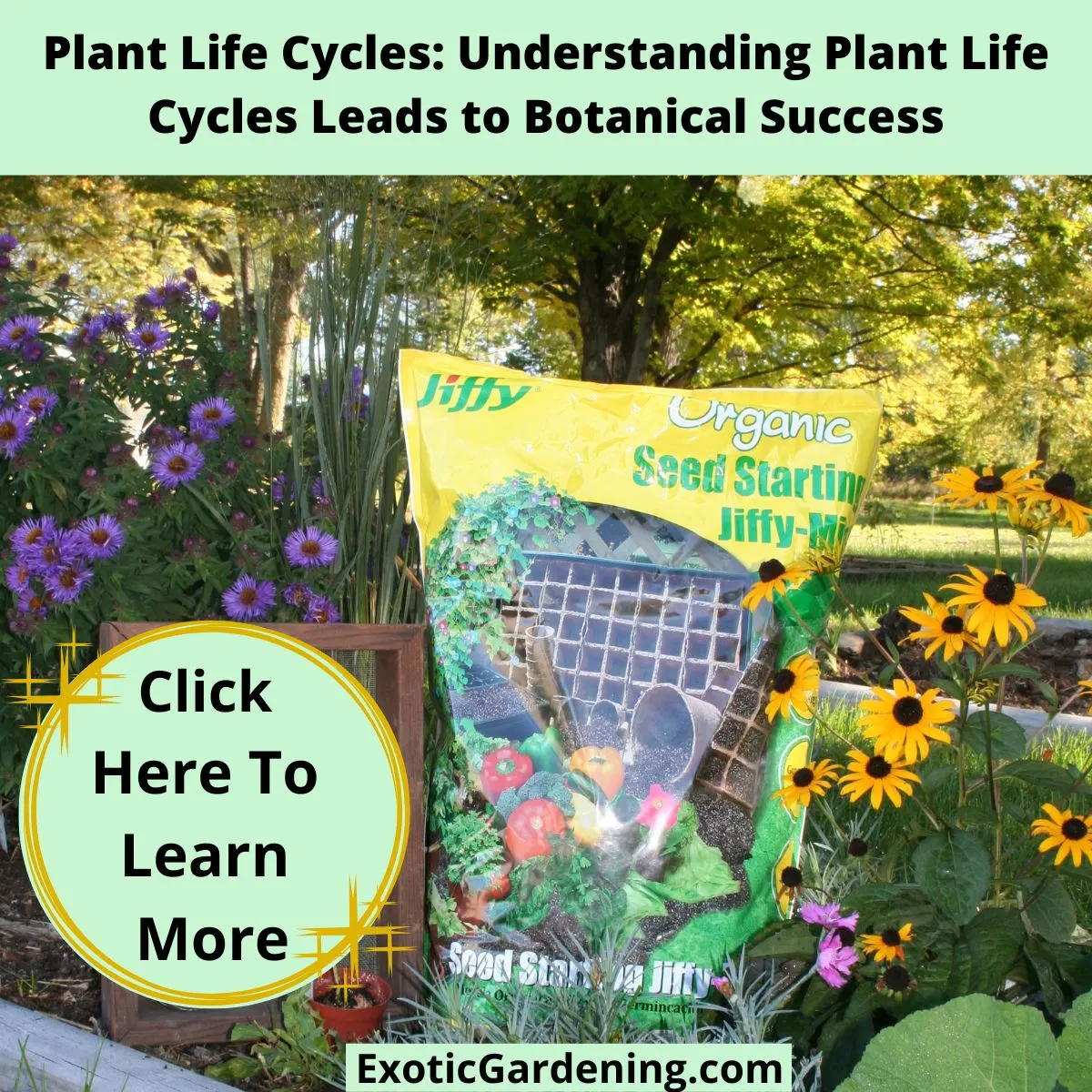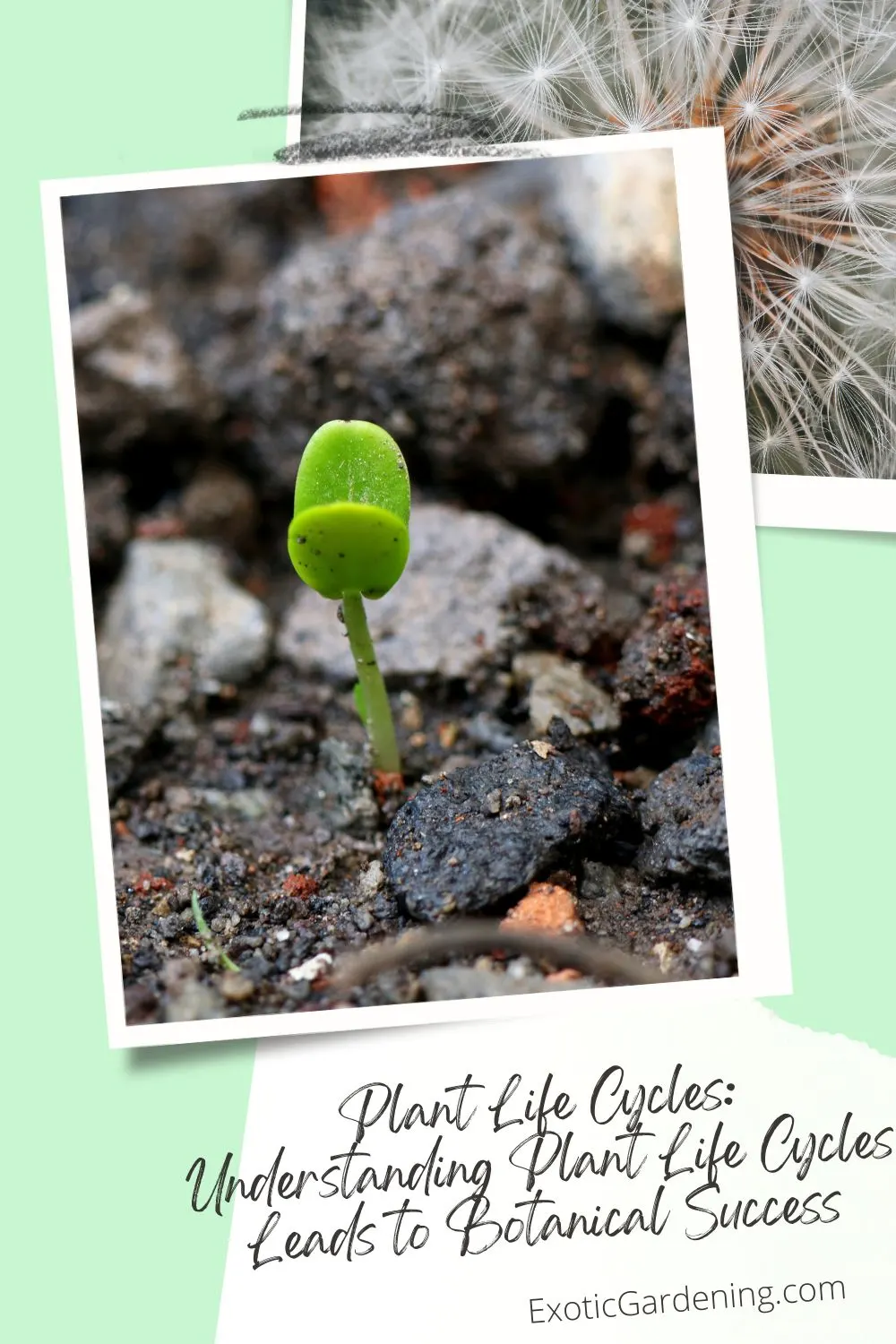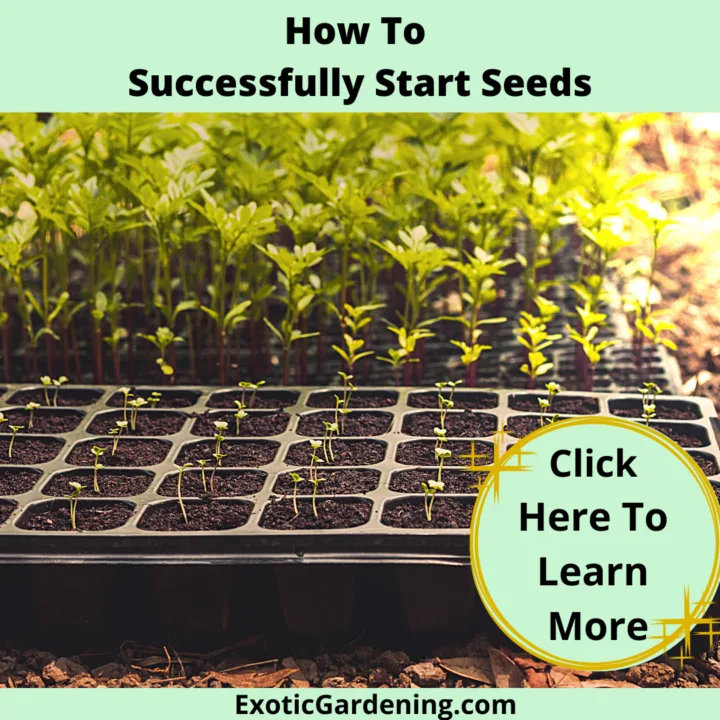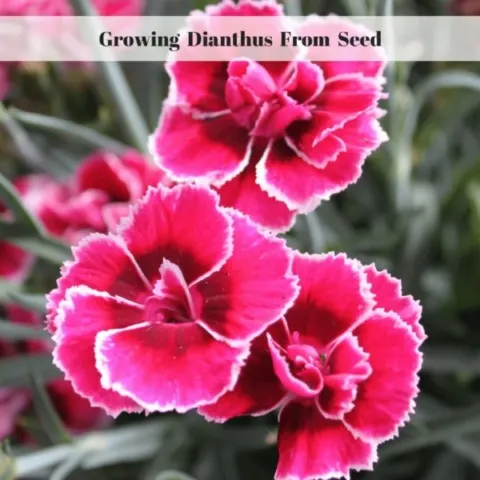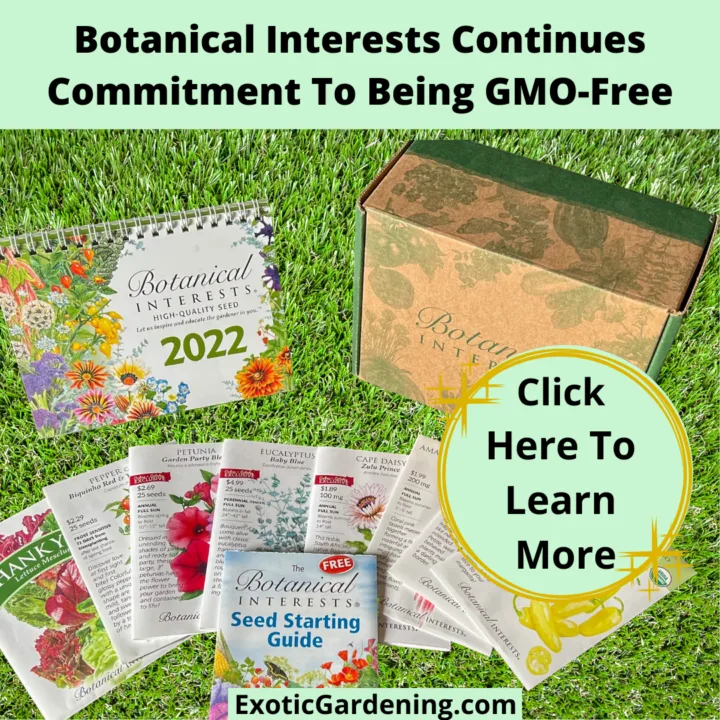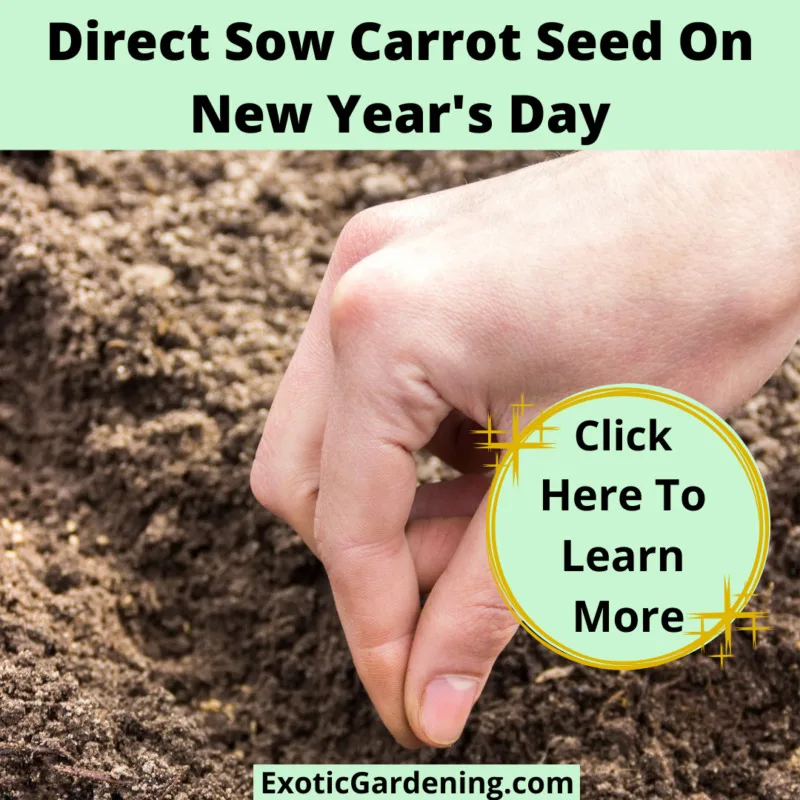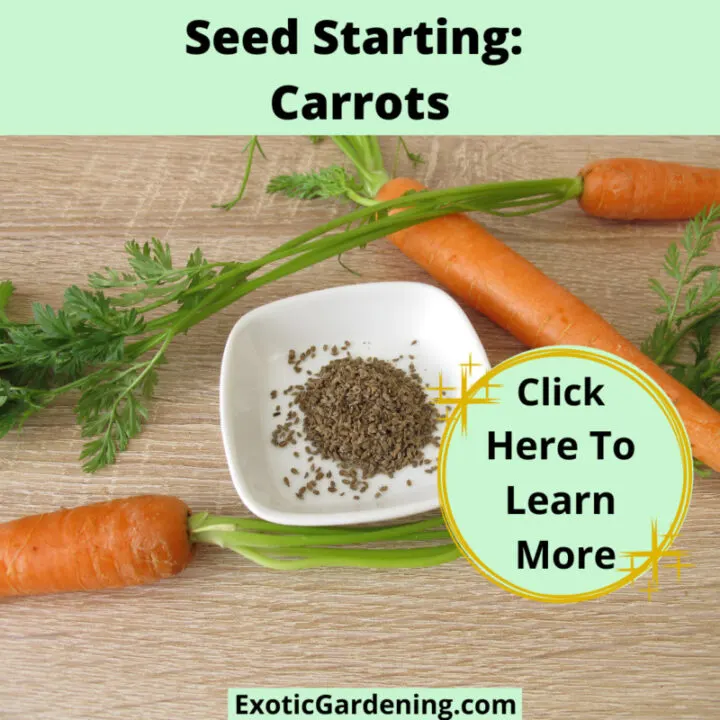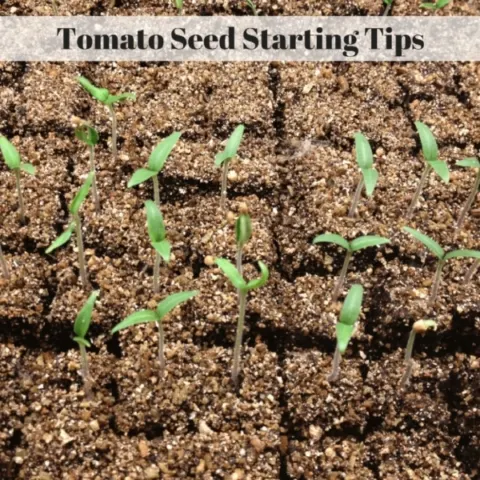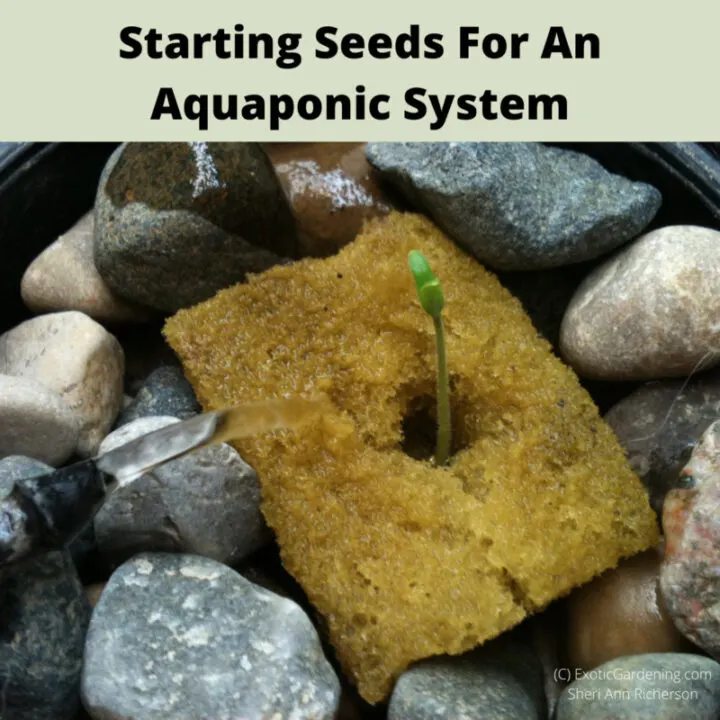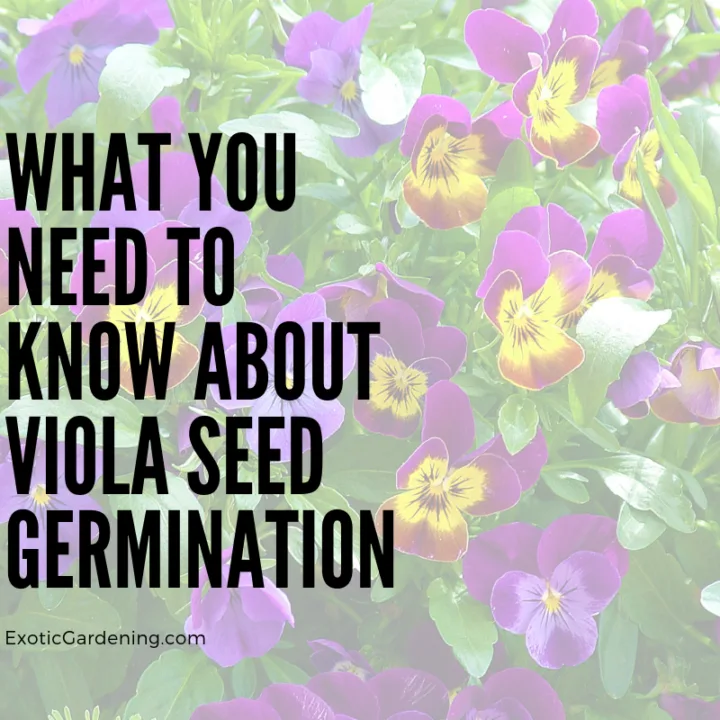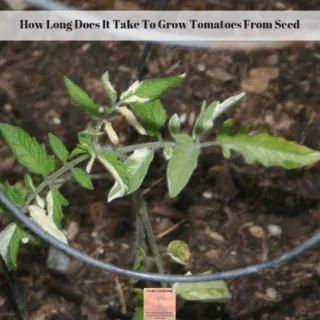Plant life cycles are the hidden rhythms that guide every seed, sprout, and bloom in our gardens.
When we understand these cycles, we start to see why some plants thrive while others struggle.
Every gardener - beginner or seasoned - has faced the frustration of seeds that don’t sprout or flowers that never set fruit.
I’ve been there myself, staring at a tray of soil and wondering what went wrong.
The secret I learned early on is this: when we understand the life cycle of a plant, from seed to bloom to seed again, you unlock the key to gardening success.
Each stage has its own needs, and once you know how to meet them, you can nurture plants with confidence instead of guesswork.
Let me walk you through how plants grow, why these stages matter, and a few simple tips to make your gardening journey smoother, and a lot more fun.
Why Understanding Plant Life Cycles Matters
Every gardener starts with a dream, a tray of seeds on the windowsill, a packet of bright zinnias waiting to bloom, or the hope of harvesting tomatoes all summer long.
But if you’ve ever stared at soil where nothing sprouted, or watched healthy seedlings wither for no obvious reason, you know the frustration that can come when plants don’t behave the way we expect.
This is where understanding plant life cycles makes all the difference.
At its simplest, a plant’s life cycle is the journey from seed to seed.
Yet within that cycle are stages that require different conditions, care, and timing.
When you understand these stages, you stop guessing and start gardening with intention.
For example, knowing that some seeds require a chilling period before they’ll sprout helps you avoid the heartbreak of failed germination.
Recognizing when your plants are focused on leafy growth rather than flowering explains why your peppers might be dragging their feet to produce fruit.
And realizing that annuals complete their life cycle in a single season, while perennials return year after year, allows you to plan your garden so it provides beauty and harvests over time.
The emotional payoff is just as important as the practical one.
When you understand how plants grow, you feel more connected to them and more confident in your role as their caretaker.
Suddenly, setbacks aren’t personal failures, they’re clues.
Instead of giving up when a batch of lettuce bolts early in the summer heat, you’ll understand it’s simply moving into the next phase of its cycle, and you can plant again at a better time.
For beginners, this knowledge builds resilience.
It transforms gardening from a series of frustrating mysteries into a rhythm you can dance with.
Each stage - from germination to flowering to seed formation - becomes an opportunity to support your plants in just the right way.
And as your confidence grows, so will your garden.
The Main Parts of a Plant
Every plant may look different above the soil, but they all share the same basic building blocks that keep them alive and thriving.
Understanding these parts isn’t just science, it’s the key to knowing what your plants need at each stage of their life cycle.
Roots – Anchoring and Nourishing
Roots are the hidden lifeline of every plant. They anchor it firmly into the soil while pulling up water and dissolved nutrients. Think of roots as both the pantry and the plumbing system - they make sure your plant has everything it needs to get started.
Stems – The Plant’s Highway
Once the roots have done their job, the stem acts like a busy highway, moving water and nutrients where they’re needed. Strong stems also hold the plant upright, reaching for light and supporting leaves, flowers, and fruit.
Leaves – Capturing Energy
Leaves are the solar panels of the plant. They soak up sunlight and, through photosynthesis, turn it into food the plant can use. Those veins running through the leaves carry food and water throughout the plant, keeping it alive and growing.
Flowers – The Reproductive Stage
Flowers may be beautiful to us, but for the plant, they’re all business. This is where reproduction happens, leading to fruits and seeds. No flowers, no harvest, so it’s worth paying attention to how your plants flower and what they need at this stage.
Fruits and Seeds – Completing the Cycle
When flowers are pollinated, they develop into fruits and seeds, ensuring the plant’s life cycle continues. Whether it’s a juicy tomato or a seed head full of sunflowers, this stage closes the loop and begins it all again.
How Seeds Develop
Watching a seed come to life is nothing short of magical, and it’s an experiment that’s just as fun for adults as it is for kids.
You don’t need fancy equipment or a big budget; with just a few common supplies, you can watch the entire process unfold before your eyes.
One of the easiest ways to try this is with beans or corn.
Simply tuck a few seeds into a damp paper towel, slip it into a clear plastic bag, and place it somewhere warm.
Within a few days, you’ll see the first signs of life.
Sometimes, especially with larger seeds, soaking them overnight softens the seed coat and helps the tiny plant inside break free.
Inside every seed is an embryo - the living heart of the future plant.
Wrapped around it are two seed leaves, called cotyledons, that act as food storage.
This stored energy gives the seedling a strong start until it can make its own food with its first true leaves.
Once those leaves appear, the cotyledons drop away, having done their job.
For seeds to sprout, the conditions have to be just right: moisture, temperature, and even light all play a role.
Some seeds, like perennials, need a period of cold before they’ll germinate.
Tropical seeds, on the other hand, want warmth.
A few even need darkness or light to trigger growth.
As the seedling pushes upward, its first root - the primary root - anchors it into the soil.
From there, side roots spread out to gather more water and nutrients.
Above the soil, the stem begins to form, carrying leaves that will soon start the process of photosynthesis.
With time, the plant grows, matures, produces flowers, and eventually sets fruit and seeds, completing its life cycle and starting the process all over again.
From Seedling to Mature Plant
There’s something magical about the moment a seed pushes its way through the soil and unfurls its first tiny leaves.
Those first leaves are usually the cotyledons, or seed leaves, which provide early nourishment.
Soon after, the plant produces its first “true leaves” - the ones that look like the adult plant’s foliage.
At this stage, your seedling is officially on its way to becoming a mature plant.
But here’s the thing: seedlings are fragile.
The care you give them now sets the stage for their long-term health and productivity.
Think of it as the foundation of a house, if it’s weak, the whole structure struggles.
Young plants need consistent light.
Without enough, they’ll grow spindly and weak, stretching toward the nearest window.
A sunny windowsill often isn’t quite enough, especially in early spring, so many gardeners supplement with grow lights.
Watering is another balancing act: too much, and the roots may rot; too little, and the plant dries out.
Aim for evenly moist soil, not soggy.
As seedlings grow, they often crowd each other.
Thinning them by snipping or gently pulling out extras, feels a little heartbreaking at first, but it gives the strongest plants the space they need to thrive.
When your seedlings outgrow their starter cells, it’s time to transplant.
Move them into larger pots or into the garden once conditions are right.
Be gentle: handle seedlings by their leaves, not their stems, since stems bruise easily and may not recover.
Supporting plants during this stage not only helps them survive, it helps them thrive.
Strong roots, sturdy stems, and healthy leaves all develop here, and that early resilience carries through to flowering and fruiting later on.
A little extra attention now can mean a healthier harvest down the road.
The Flowering Stage
When your plants finally begin to flower, it’s a sign they’ve reached maturity and are ready for reproduction.
Flowers aren’t just beautiful, they’re essential for producing fruit and seeds.
Some plants can pollinate themselves (self-pollination), but many require the help of pollinators like bees, butterflies, or even the wind.
Without successful pollination, flowers will wither without producing a harvest.
As gardeners, we play a big role in supporting this stage.
Creating a pollinator-friendly space filled with nectar-rich plants, avoiding harsh pesticides, and even hand-pollinating when necessary all help ensure your plants continue the cycle.
Fruit and Seed Formation
After successful pollination, flowers transform into fruit and seeds.
This is the moment every gardener waits for - the payoff of patience and care.
The type of plant determines how long this stage lasts:
- Annuals complete their life cycle in a single season, setting seed before dying back.
- Biennials take two years, often producing leaves in the first year and flowers and seeds in the second.
- Perennials return year after year, sometimes flowering and setting seed for decades.
For gardeners interested in saving seeds, it’s important to choose open-pollinated or heirloom varieties.
Hybrid plants won’t reliably grow true from seed, but open-pollinated ones will carry forward the same traits season after season.
Completing the Cycle
Once seeds mature, nature takes over.
They may drop to the ground, scatter on the wind, or be carried away by birds and animals.
In your garden, you can let seeds self-sow for surprise volunteers next year, or you can harvest and store them to replant with intention.
Understanding this cycle reminds us that gardening is more than just planting - it’s about stewardship.
When you save seeds, share them with neighbors, or even tuck them into next season’s soil, you’re part of nature’s rhythm.
You’re helping the cycle continue, just as gardeners have done for centuries.
Common Beginner Mistakes with Plant Life Cycles
Even the most enthusiastic gardeners make missteps when they’re just starting out.
Here are a few common mistakes to avoid:
- Planting at the wrong stage: Cool-season crops like lettuce and spinach struggle in midsummer heat, while warm-season crops won’t thrive in cold soil.
- Over- or under-watering seedlings: Too much water can cause damping-off disease, while too little leaves them stunted.
- Ignoring pollination needs: Without bees, butterflies, or hand-pollination, many plants won’t produce fruit.
Bringing It All Together
Watching a plant grow from seed to seed is a beautiful reminder of nature’s rhythm, and your role in it.
Each stage of the plant life cycle offers its own lessons, from patience in germination to joy in harvest.
If you’re ready to dive deeper into seed starting and saving, I cover these topics in much greater detail in my book:
👉 The Complete Idiot’s Guide to Seed Saving and Starting
It’s filled with practical advice, step-by-step instructions, and encouragement for gardeners of all levels.
Whether you’re planting your very first seed or building a collection for future harvests, this book will guide you with confidence.
And if you haven’t already, try the simple seed experiment with beans or corn - it’s an easy, fun way to see the miracle of plant life cycles right on your windowsill.
Once you see those first true leaves, I promise you’ll be hooked.
FAQ: Plant Life Cycles
Q: What are plant life cycles?
A: A plant life cycle is the complete journey from seed to seed—covering germination, growth, flowering, fruiting, and seed production.
Q: Why are plant life cycles important for gardeners?
A: Understanding plant life cycles helps gardeners know when to plant, how to care for each stage, and how to harvest or save seeds.
Q: How long does each stage of the plant life cycle take?
A: It varies by plant type. Quick-growing vegetables may finish in weeks, while perennials can take years to reach maturity and flower.
Q: What environmental factors affect plant life cycles the most?
A: Soil health, moisture, light, and temperature all play key roles. Some seeds even need special conditions like chilling or darkness to sprout.
Q: Do all plants need pollinators?
A: Not always. Some plants self-pollinate, others need wind, and many rely on insects like bees or butterflies for fruit and seed production.
Q: Can gardeners speed up or slow down plant life cycles?
A: Yes. Warmth, light, and proper nutrients often speed growth, while poor soil, cold temperatures, or lack of water can slow development.
Q: What’s the difference between annual, biennial, and perennial life cycles?
A: Annuals complete their cycle in one season, biennials take two years, and perennials live for many years, flowering and producing repeatedly.
Q: Can I save seeds from any plant?
A: You can, but for predictable results choose open-pollinated or heirloom varieties. Hybrid seeds often don’t grow true to type the following year.
Q: Is letting plants self-seed a good idea?
A: It can be! Self-seeding often produces free plants, but volunteers may cross with other varieties or crowd your garden.
Q: How can beginners learn plant life cycles easily?
A: Try simple seed-starting experiments with beans or corn, keep a garden journal, and observe how each stage unfolds in your own space.
Growing Plants From Seed
How To Successfully Start Seeds
Learn how to successfully start seeds indoors or out. Learn about light requirements, seed sowing depth, how to prevent damping off and more.
Growing Dianthus From Seed
Learn all about growing dianthus from seed and about some of the varieties available. Also learn how to save seeds from dianthus flowers.
Botanical Interests Continues Commitment To Being GMO-Free
I love Botanical Interests not only for their high quality seeds, but for their commitment to being GMO-free.
Seed Starting: Carrots
Unlock the Magic of Carrot Seed Starting: Expert Techniques for Success. Start Growing Vibrant Carrots Today!
